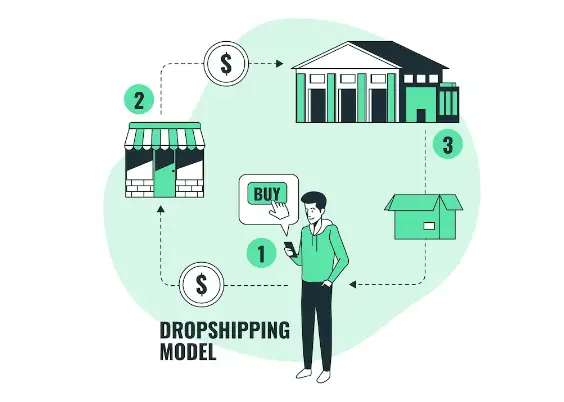
Visits: 1
How to Do Dropshipping With Shopify? Step-By-Step Guide
If you’re looking to start an online business and explore the world of ecommerce, dropshipping can be an excellent option. With its low startup costs and minimal inventory management, dropshipping has become a popular business model. Shopify, a leading ecommerce platform, offers a user-friendly interface and powerful tools that make it an ideal choice for running a dropshipping business. In this article, we will guide you step-by-step on how to do dropshipping with Shopify, enabling you to launch your own successful online store.
1. Introduction to Dropshipping
Dropshipping is a business model where you, as the store owner, don’t need to keep products in stock. Instead, when a customer places an order on your online store, you forward the order details to your supplier, who then ships the products directly to the customer. This eliminates the need for inventory management and upfront investment in stock, making it an attractive option for aspiring entrepreneurs.
2. Choosing a Profitable Niche
To succeed in dropshipping, it’s essential to choose a profitable niche. Research market trends, analyze competition, and identify products with high demand and profit potential. Consider factors like product uniqueness, target audience, and market saturation when selecting your niche. A focused niche allows you to build a brand and cater to a specific customer base effectively.
3. Setting Up Your Shopify Store
Creating a Shopify store is simple and straightforward. Sign up for a Shopify account, select a suitable theme, and customize it to align with your brand. Add essential pages like Home, About Us, Contact, and Privacy Policy. Configure payment gateways, shipping methods, and taxes according to your business requirements. Shopify provides detailed tutorials and customer support to help you through the process.
4. Sourcing Products for Your Store
One of the key aspects of dropshipping is finding reliable suppliers for your products. Look for reputable suppliers with a track record of quality products, timely shipping, and good customer service. You can source products from platforms like AliExpress, Oberlo, or connect with manufacturers and wholesalers directly. Ensure that the supplier’s products align with your niche and meet your quality standards.
5. Importing Products to Your Shopify Store
Shopify offers integration with various dropshipping apps like Oberlo, Spocket, or Modalyst, which streamline the process of importing products to your store. These apps enable you to browse and import products directly from their supplier databases. Import product images, descriptions, and pricing details. Customize product titles and descriptions to make them unique and appealing to your target audience.
6. Optimizing Product Pages for SEO
Search engine optimization (SEO) is crucial for driving organic traffic to your store. Optimize your product pages by using relevant keywords in titles, descriptions, and alt tags for images. Craft compelling product descriptions that highlight benefits, features, and unique selling points. Focus on creating unique and informative content that resonates with your target audience and attracts search engine attention.
7. Managing Orders and Customer Support
As orders start coming in, it’s essential to manage them efficiently. Shopify provides an intuitive order management system that allows you to process orders seamlessly. Monitor inventory levels, track shipments, and communicate with your suppliers to ensure timely fulfillment. Provide excellent customer support by promptly responding to inquiries, resolving issues, and maintaining a positive buying experience for your customers.
8. Marketing and Promoting Your Store
To generate sales and increase brand awareness, you need to actively market and promote your dropshipping store. Leverage social media platforms, email marketing, influencer collaborations, and content marketing to reach your target audience. Run targeted advertisements on platforms like Facebook and Instagram to drive traffic to your store. Implement effective marketing strategies and analyze their performance to optimize your campaigns.
9. Analyzing and Improving Your Store’s Performance
Regularly monitor and analyze your store’s performance using Shopify’s built-in analytics and Google Analytics. Track key metrics like conversion rate, average order value, and customer acquisition cost. Identify areas for improvement and implement strategies to enhance your store’s performance. A/B test different product descriptions, pricing strategies, and marketing campaigns to optimize your sales and increase profitability.
10. Scaling Your Dropshipping Business
Once your dropshipping business starts gaining traction, it’s time to scale and expand your operations. Continuously research and add new products to your store to cater to evolving customer demands. Explore opportunities to collaborate with influencers and establish partnerships with complementary brands. Consider expanding to additional sales channels like Amazon or eBay to reach a broader audience and maximize your sales potential.
Conclusion
Starting a dropshipping business with Shopify offers a low-risk and accessible entry point into the world of ecommerce. By following the step-by-step guide outlined above, you can create a successful dropshipping store that generates consistent sales and profits. Remember to stay informed about market trends, adapt your strategies accordingly, and provide exceptional customer experiences to build a thriving online business.
FAQs
- Can I run a dropshipping business while working a full-time job? Yes, dropshipping allows flexibility and can be managed alongside a full-time job. However, it requires dedicated time and effort to succeed.
- Do I need technical skills to set up a Shopify store? No, Shopify provides an intuitive platform that doesn’t require coding or technical skills. Its user-friendly interface makes it accessible to beginners.
- How do I handle returns and refunds in dropshipping? Discuss return policies with your suppliers and clearly communicate them to your customers. Establish protocols for returns and refunds to ensure a smooth process.
- Is dropshipping still profitable in today’s market? Yes, dropshipping can be profitable if you choose the right niche, source reliable suppliers, and implement effective marketing strategies.
- Can I change my niche or add new products later on? Absolutely! As your business grows, you can adapt and evolve your niche or add new products to cater to changing market demands.


%20(1).png)

